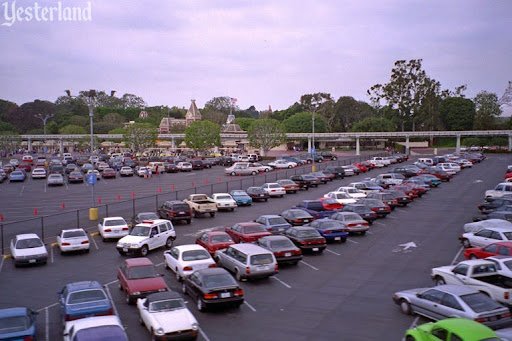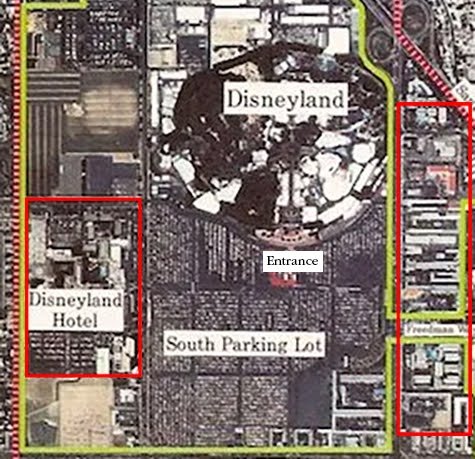Turning Pits in to Peaks 🏔
Disney had a problem.
It was the year 2000, and Disney’s marquee hotel, the Disneyland Hotel, was separated from the theme park by more than half a mile of asphalt. Guests coming to California to visit the Happiest Place on Earth, staying at one of the most expensive properties in the area, would be wrenched out of the magic… Imagine walking from your classy hotel to the park across this asphalt parking lot on a sweltering summer day… not so magical!
Furthermore, the hotel was more than twice the distance from the front gate as nearly a dozen motels and hotels just to the east of the park entrance.
Above: Disneyland Hotel in 1997, separated from its namesake park by an asphalt jungle, while at the same time being twice as far from the park as neighboring hotels to the east.
Disney had a problem – a poor customer experience. And they were at a competitive disadvantage to their neighbors, who had the natural advantage of being closer to the front gate.
Why would anyone travel to California, pay a hefty premium for Disney-branded lodging, only to be further away from the park and be forced to walk across a parking lot to get there?
Before I share how Disney turned this terrible customer experience into a magical moment, let me share why I think this should matter to you, and what you can do to leverage this in your leadership.
Peaks and pits
Every customer experience, every donor experience has its highs and lows.
We humans tend to think of our experiences as the sum total of what happens to us. Take all the good moments, the bad moments, and in-between moments, average them together, and you get the customer experience, right?
But this just isn’t true.
The truth is that, with time, our brains are wired to distill our memories down to the best-of-the-best moments (peaks) and the worst-of-the-worst moments (pits).
Dan and Chip Heath unpack this phenomenon at length in an excellent book called The Power of Moments.
The essence of the book is that as humans, we are wired to remember only the most powerful moments, and that is where we should focus most of our efforts in either fixing or elevating moments for those around us – customers, donors, family members, and friends.
Psychologists have found that when people assess an experience, they tend to forget its length and many of the individual moments. Instead, they seem to rate the experience based on a couple of key moments:
The best moment - the “peak”, or
The worst moment - the “pit”, and
The ending
Think about last year’s family vacation. How would you rate it? Why would you give that rating? I would venture to guess that what you mostly remember are the most powerful moments, whether moments of elevation or negative pits.
If we’re sticking with Disney, it might be the first time your child skipped down Main Street, filled with awe and wonder. For others, it might be that terrible customer experience interaction or the line that you stood in the heat for 2 hours, only for the ride to break down.
💡 Takeaway: Are there remarkable moments – peaks – that individuals have with your organization? Moments that stick with them long after? How about pits – moments that are so bad that they are remembered? Or do you have more of a series of “hills” and “valleys” – moments that are kind of memorable or kind of bad, but don’t stand out? Remember these, because in a moment we’ll look for ways to turn the pits into peaks, and elevate the best moments into defining moments.
Four elements of defining moments
Dan and Chip Heath go on to describe four types of characteristics that are common among peak moments:
Elevation - Experiences that rise above the everyday. Moments that you savor. Come back to again and again. Moments that make us feel engaged, joyful, amazed, motivated.
Insight - Defining moments that rewire our understanding of ourselves or of the world. In a few seconds or minutes, we realize something that might influence our lives for decades.
Pride - Moments that capture us at our best – moments of achievement, milestones, awards. This includes moments of courage – the stakes are high, we’re in that competition or on that stage, absorbed in the moment.
Connection - Moments of connection deepen our relationship with others. They are shared experiences that stick with us. They might be with one other person, like a partner or spouse, or they might be with dozens or hundreds, or even thousands of others.
Not every memorable experience taps into all four elements. But the most powerful moments typically tap into more than one of these elements.
Take a few seconds, and think about a powerful moment in your life. Something that stands out to you - it might be a touching family moment, a happy memory, or a career highlight.
Now, look at the list above – do you see one or more of these elements in your memory? The more powerful the moment, the more of these I would venture to guess you’ll see.
💡 Takeaway: Think back to the remarkable or would-be remarkable moments for individuals that interact with your organization. How might you take that moment to an entirely new level by introducing a moment of elevation, an element of insight, something that induces pride, or a powerful human connection? This isn’t easy to do – sometimes I’ve found the best thing is to bring people into a room and brainstorm – describe the moment you want to elevate, put these four elements out there, and see what creative ideas flow.
How Disney turned a pit into a peak
Let’s return to 2000-era Disneyland. They had this hotel experience that they wanted to be great but had a severe disadvantage – a vast stretch of unappealing asphalt parking lot between guests and the theme park they came to visit.
The first solution to this pit in the early days was the Disneyland Monorail – an innovative, exciting, and exclusive form of transportation directly to the park. But by 2000, guests would line up for the monorail and wait 45 minutes in line for a ride to the park rather than walk just 15 minutes to get to the park entrance.
No one wanted to walk across a parking lot. As Joni Mitchell sang in the 60s, they had paved paradise and put up a parking lot.
Disney’s solution? Pave over a parking lot and put up paradise.
Disney’s solution – Disney Springs
Disney ultimately devised a plan that would solve multiple problems simultaneously – that plan was Disney Springs.
On the surface, Disney Springs is a shopping district with shops, restaurants, and entertainment experiences. But it’s also a meandering thoroughfare designed to create a sense of leisurely stroll and discovery.
A friend of mine was in Disney Imagineering during the time and helped to design Disney Springs. He described the inspiration of a European village – no straight lines and discoveries around every corner.
This was an expensive investment with significant financial risk, so Disney wisely diffused that risk by partnering with third parties to fill the space with third-party brands and restaurants.
In the end, Disney solved multiple problems simultaneously:
Solved a logistics problem by getting people to walk rather than ride the monorail.
Turned a pit experience into a peak experience, making the stroll one of elevation and discovery.
Made more money by monetizing what was a parking lot into a lucrative shopping and dining experience.
💡 Takeaway: What is the worst part of your customer or donor experience? How can you flip it and turn that liability into an asset?
I was recently in Downtown Disney and shared this video telling a bit more about the story. Click through if you’d like to see that.
Until next week… Surfs Up! 🌊
- Dave
About the Author | Dave Raley
Consultant, speaker, and writer Dave Raley is the founder of Imago Consulting, a firm that helps non-profits and businesses create profitable growth through sustainable innovation. He’s the author of a weekly trendspotting report called The Wave Report, and the co-founder of the Purpose & Profit Podcast — a show about the ideas at the intersection of nonprofit causes and for-profit brands.
Want to receive insights like this weekly?
Every Friday, we send out The Wave Report, highlighting one trend or insight “wave,” from donor and consumer trends to innovation in different industries or new models for growth.
Subscribe today to receive free weekly insights in your inbox here:



